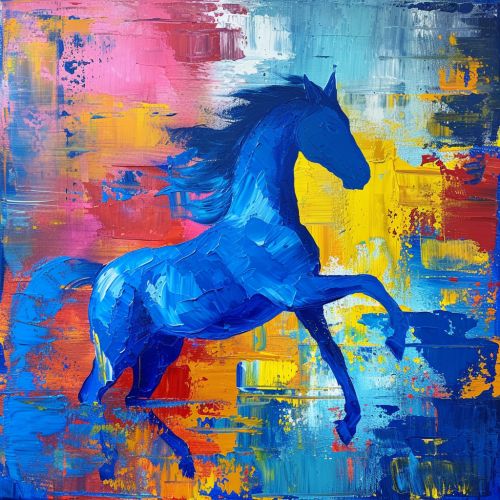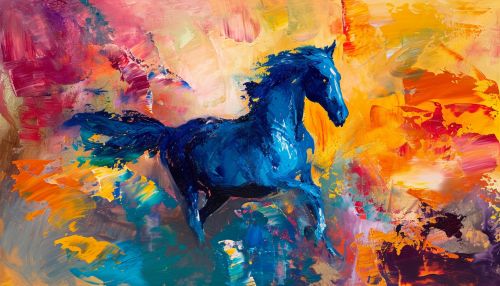Der Blaue Reiter
Origins and Formation
Der Blaue Reiter (The Blue Rider) was an art movement that originated in Munich, Germany, in the early 20th century. The movement was founded by a group of artists led by Russian emigrant Kandinsky and German painter Marc. The group was united by a shared desire to express spiritual truths through their art, a rejection of the materialistic and industrial society of the time, and a belief in the transformative, symbolic power of color.


The name "Der Blaue Reiter" was chosen for its symbolic significance. The color blue was associated with spirituality and the riders represented a movement towards a new spiritual art. The group was not a formal association, but a loose collective of artists who shared similar ideas and artistic goals.
Key Members and Contributors
In addition to Kandinsky and Marc, the main contributors to the movement included Münter, Macke, Jawlensky, Werefkin, and Schoenberg. Each of these artists brought their unique style and perspective to the group, contributing to the diverse range of works produced under the banner of Der Blaue Reiter.
Artistic Philosophy and Style
The artists of Der Blaue Reiter sought to express the spiritual and emotional aspects of human experience through their art. They rejected the traditional artistic focus on physical reality, instead favoring abstract forms and symbolic color to convey deeper meanings. The group was heavily influenced by the Symbolist movement and the philosophical ideas of Steiner and Nietzsche.
The style of Der Blaue Reiter was characterized by its use of bold, non-naturalistic color and abstracted forms. The artists often used color symbolically, with blue representing spirituality and red symbolizing the material world. The use of non-representational forms and abstracted figures was also a key feature of the movement, reflecting the group's emphasis on the spiritual and emotional over the physical and material.
Influence and Legacy
Despite its short lifespan (the group disbanded with the onset of World War I), Der Blaue Reiter had a significant impact on the development of modern art. The movement's emphasis on abstraction and symbolic color influenced a number of subsequent art movements, including Expressionism, Abstract Expressionism, and Surrealism.
The legacy of Der Blaue Reiter continues to be felt in the art world today. The group's innovative use of color and form, its exploration of spiritual themes, and its rejection of materialism remain influential in contemporary art. The movement's emphasis on the transformative power of art and its belief in the potential for art to convey profound spiritual truths continue to inspire artists today.
